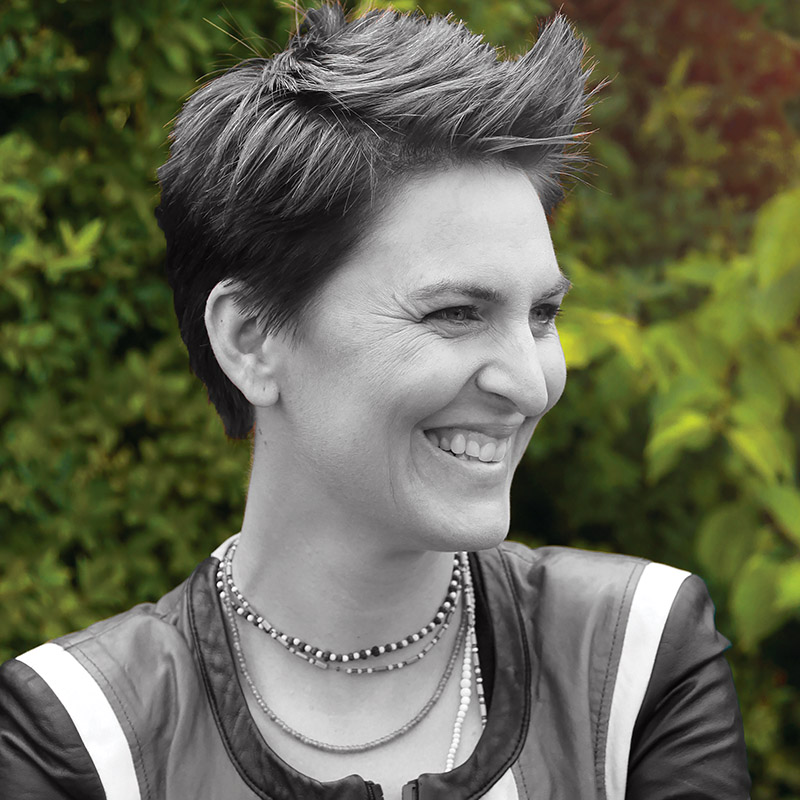Anna Heringer
December 16, 2020
For Anna Heringer, architecture is a tool to improve lives. As an architect and honorary professor of the UNESCO Chair of Earthen Architecture, Building Cultures and Sustainable Development, she is focused on the use of natural building materials. She has been actively involved in development cooperation in Bangladesh since 1997. Her diploma work, the METI School in Rudrapur, was realised in 2005 and won the Aga Khan Award for Architecture in 2007.
Over the years, Heringer has built projects in Asia, Africa and Europe. Together with collaborator, Martin Rauch, she developed ‘clay storming’, a method that she teaches at various universities, including ETH Zurich, UP Madrid, Technical University of Munich (TUM) and Harvard Graduate School of Design (GSD).
She has received numerous honours: the Global Award for Sustainable Architecture; the AR Emerging Architecture Awards in 2006 and 2008; the Loeb Fellowship at Harvard’s GSD; and a RIBA International Fellowship. Her work has been widely published and exhibited in the MoMA New York; the Victoria & Albert (V&A) Museum in London; and at the Venice Biennale, amongst other places. In 2013, she co-initiated the Laufen Manifesto where practitioners and academics from around the world contributed to define guidelines for a humane design culture.
In a conversation with FuturArc’s Editor-in-Chief, Dr Nirmal Kishnani, she speaks about her work and activism.

NK: Let’s start with your speech at the LafargeHolcim Forum in Cairo, 2019. On stage, you looked squarely at the CEO of LafargeHolcim, one of the world’s largest producers of cement, who was seated in the front row, and asked that his company raise the price of cement. What made you abandon the polite tone that prevails at these types of events?
AH: I’ve been brought up to be very polite so this was not an easy decision. Three days of the conference had passed; no one had addressed the elephant in the room. Ideas that were discussed have been mentioned many times over many years, but nothing was moving forward. At around the same time, the Swedish activist, Greta Thunberg, was lobbying to save the future. Children like her and my daughter cannot provide solutions for the climate crisis, but they remind us every day that our house is on fire. We need action now. The room was filled of experts on sustainability and people in power. And so, I felt I had to say something.
We know that cement is a large contributor to climate change. If cement were a country, it would be the third largest emitter in the world after China and the US. I don’t think we can achieve the change we need without feeling uncomfortable. Change comes with some pain. That is challenging, but the earlier we start, the more time we have to adjust and learn. I’m not saying that materials like cement, steel and aluminium are bad. I’m saying that they are precious and therefore, should be used in a homeopathic way, in a reasonable way. Overuse is the problem. And one way to reduce overuse is of course to place a truthful price on materials that cause harm to the environment.
“I don’t think we can achieve the change we need without feeling uncomfortable. Change comes with some pain. That is challenging, but the earlier we start, the more time we have to adjust and learn.”
NK: Do you feel that we have lost our way in the sustainability discourse? How did we get here?
AH: We are not happy as a society because we’ve become detached, we’ve lost authenticity. We’ve lost harmony with nature. The sustainability debate is not getting to the core problem. If we want to build in harmony with nature, we have to accept the idea of death. It’s a problematic topic and so we try not to talk about it. We pretend to build for eternity. But no one is actually building for eternity. We tear our buildings down after 40 years or so, sometimes earlier.
We are a waste society; we can’t stick with something for long. Yet we use so much steel and concrete instead of building compostable buildings. We think sustainability is a technical issue but it’s more than that. Let’s compare construction to healthcare; even if we have the best healthcare system and research, there is a point where we have to die. The same goes for our buildings. We should design for decay so that we are in harmony with nature. That’s something we don’t talk about.

Female tailors at the Dipdii Textiles with the embroideries of Anandaloy’s elevation (second from left) and METI School’s elevation (fourth image from left)
“If we want to build in harmony with nature, we have to accept the idea of death. It’s a problematic topic and so we try not to talk about it. We pretend to build for eternity. But no one is actually building for eternity. We tear our buildings down after 40 years or so, sometimes earlier.”
To read the complete article, get your hardcopy at our online shop/newsstands/major bookstores; subscribe to FuturArc or download the FuturArc App to read the issues!
Previously Published FuturArc Interview
Contact us at https://www.futurarc.com/contact-us for older interviews.

